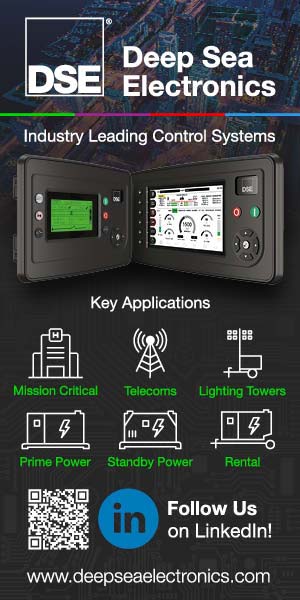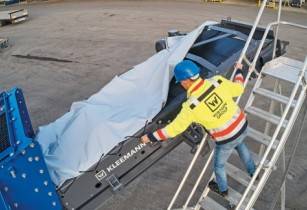The Industrial Internet of Things (IIoT) can be characterised as vast numbers of connected industrial systems that communicate and coordinate their data analytics and actions to improve industrial performance and make the world a smarter place, according to study by National Instruments
The study added that the idea of a smarter world where systems with sensors and local processing are connected to share information is taking hold in every single industry. These systems will be connected on a global scale with users and each other to help users make more informed decisions. Many labels have been given to this overarching idea, but the most ubiquitous is the Internet of Things (IoT). The IoT includes everything from smart homes, mobile fitness devices, and connected toys to the IIoT with smart agriculture, smart cities, smart factories, and the smart grid.
The IIoT is set to transform companies and industries by opening up a new era of economic growth and competitiveness. The future will witness an intersection of people, data and intelligent machines which will have far-reaching impacts on the productivity, efficiency and operations of industries around the world. The intelligent connected devices, machines and objects will certainly automate and drive efficiencies and will enable the creation of entirely new products, services and markets.
Industrial systems that interface the digital world to the physical world through sensors and actuators that solve complex control problems are commonly known as cyber-physical systems. These systems are being combined with big analog data solutions to gain deeper insight through data and analytics.
By making machines smarter through local processing and communication, the IIoT could solve problems in ways that were previously inconceivable. But, as the saying goes, ?If it was easy, everyone would be doing it.?
As innovation grows so does the complexity, which makes the IIoT a very large challenge that no company alone can meet.
The IIoT Challenge
The challenge becomes even more complex when comparing the requirements of the industrial internet to those of the consumer internet. Both involve connecting devices and systems all across the globe, but the IIoT adds stricter requirements to its local networks for latency, determinism and bandwidth. When dealing with precision machines that can fail if timing is off by a millisecond, adhering to strict requirements becomes pivotal to the health and safety of the machine operators, the machines and the business.
Adaptability and Scalability
As the IIoT comes to fruition, it will be a big change for historical industrial systems. The traditional design and augmentation of industrial systems are characterized by either (1) designing a proprietary or custom end-to-end solution or (2) adding functionality by repeatedly tacking on vendor-defined black boxes. The tack-on solution can be quick to implement, but at what cost? One of the biggest advantages of the IIoT is that data is easily shared and analysed for better decision making. For example, in a vendor-defined condition monitoring solution, the data being acquired and analyzed is not easily available; the system is limited to sending simple alarms to prevent a catastrophic failure. Data may be available after an event to analyse and determine what went wrong, but by then, time, money, and more may have been lost. If the condition monitoring data is not continuously analysed and made available through an open, standardised interface, there is no possibility of adjusting control algorithms based on the data collected or correlating the collected data to control events to improve efficiency or prevent system downtime.
The opposite is true for end-to-end solutions. All of the components and the end-to-end solution can work in harmony, but the underlying issue still remains. When an end-to-end solution is built, the communication protocols are uniform and data can be shared easily. But at that point, the solution itself essentially becomes the black box due to proprietary communication protocols. As soon as an update is required, the engineer faces the dilemma of tacking on a solution that may not communicate well with the whole system or of starting the process over and creating a new end-to-end solution. IIoT systems need to be adaptive and scalable through software or added functionality that easily integrates into the overall solution. When the entire system is a black box, this cannot occur. There has to be a better way to integrate disparate systems and reduce system complexity without sacrificing innovation.
Security
Adaptability and scalability are only the first of many challenges presented by the IIoT. Systems management and security are also paramount. As massive networks of systems come online, these systems need to communicate with each other and with the enterprise, often over vast distances. Both the systems and the communications need to be secure, or millions of dollars? worth of assets are put at risk. One of the most prevalent examples of the need for security is the smart grid, which is on the leading edge of the IIoT. As information on the grid becomes more accessible, so does the damage a security breach can inflict.
Maintenance and Updates
In addition to being secure, these systems need to be continually modified and maintained to meet ever-changing functionality and system-maintenance requirements. As more capabilities are added, software updates are needed or more systems must be added. Soon a tangled web of interconnected components starts to form. The new system has to integrate not only with the original system but also all of the other systems. Imagine modifying and updating thousands or millions of systems located all over the world, including some in remote locations.
The IIoT Investment
Developing and deploying the systems that will make up the IIoT represent a massive investment for decades to come. The only way to meet the needs of today and tomorrow is not by predicting the future but by deploying a network of systems flexible enough to evolve and adapt. The way forward involves a platform-based approach; a single flexible hardware architecture deployed across many applications removes a substantial amount of the hardware complexity and makes each new problem primarily a software challenge. The same principle must be applied to software tools to form a powerful hardware-software platform that creates a unified solution. An effective platform-based approach does not focus on hardware or software but instead on the innovation within the application itself.
Platforms to develop the IIoT exist today. The platforms that system designers choose need to be based on an IT-friendly OS so they can be securely provisioned and configured to properly authenticate and authorize users to maintain system integrity and maximise system availability. These platforms can achieve this through an open OS that helps security experts from around the world unite and develop the latest in embedded security. These platforms also need to be based on standard Ethernet technologies and incorporate evolving standards to enable a more open and deterministic network that meets IIoT latency, determinism, and bandwidth requirements while maximising interoperability between industrial systems providers and the consumer IoT.
Organisations like the Industrial Internet Consortium (IIC) document use cases and ensure interoperability, and IEEE has formed the Time Sensitive Network task group to evolve IEEE 802.1 to meet these requirements. The ongoing design of the IIoT represents a massive business and technology opportunity for all of us. Organisations like the IIC, IEEE, and AVnu are working hard to define the IIoT. They are actively gathering use cases to better understand how best to enable more innovation. Engineers and scientists are already implementing systems on the leading edge of the IIoT, but they still face many unknowns and much work ahead. Start concentrating on a platform-based approach and become part of the IIoT generation by getting involved with these bodies to define the future and ensure that businesses focus on innovation and not simply integration.



























